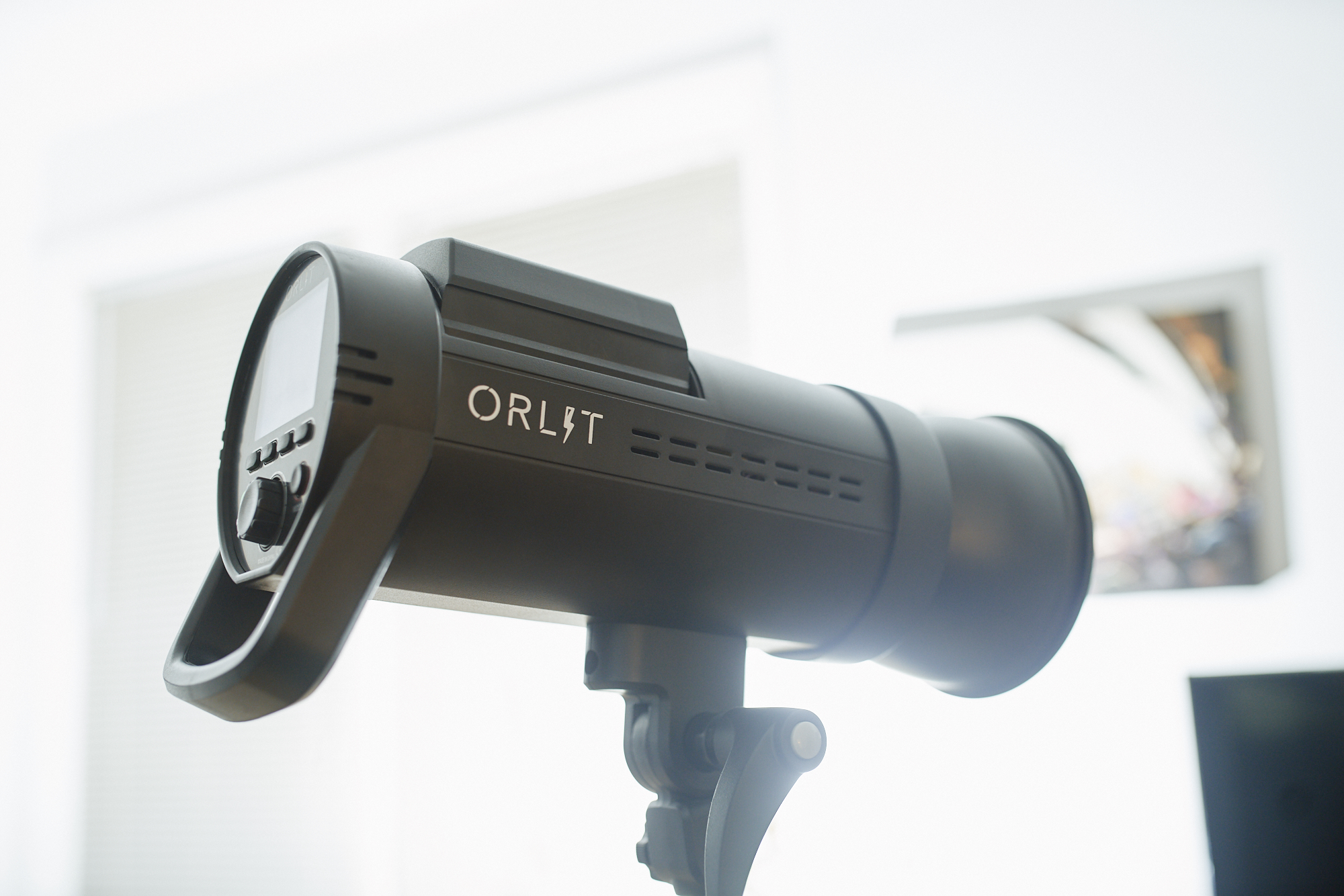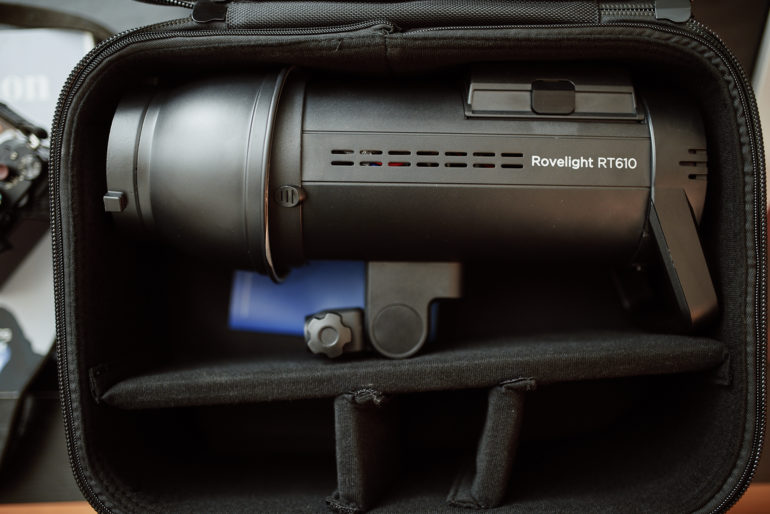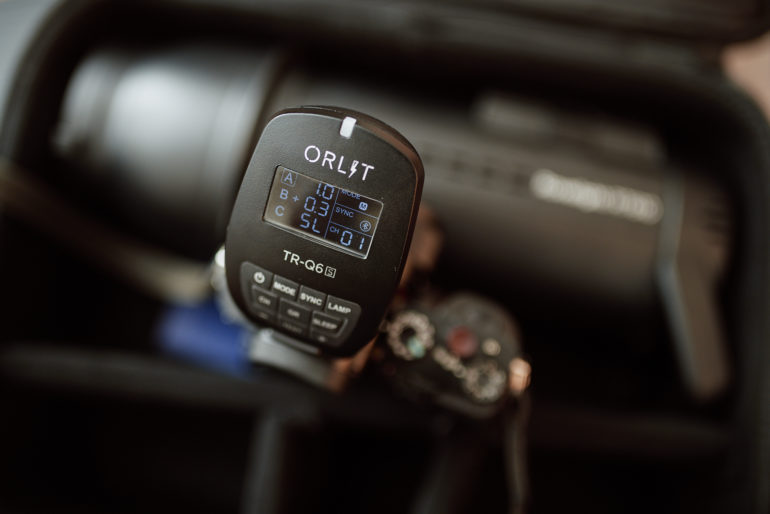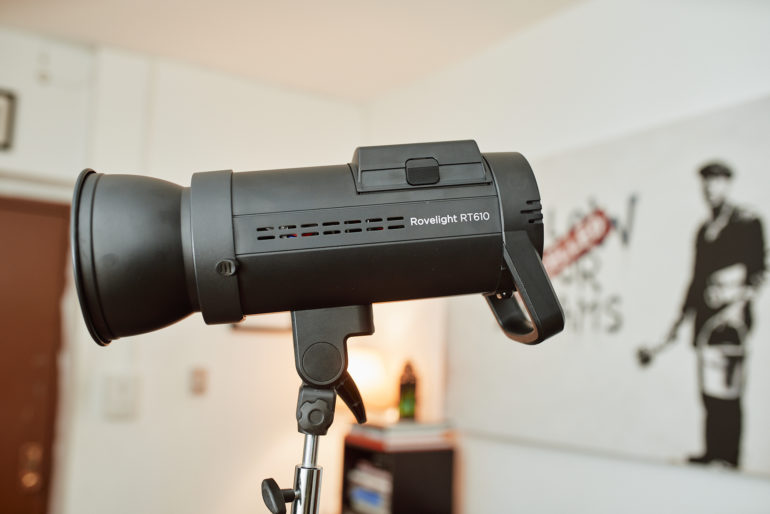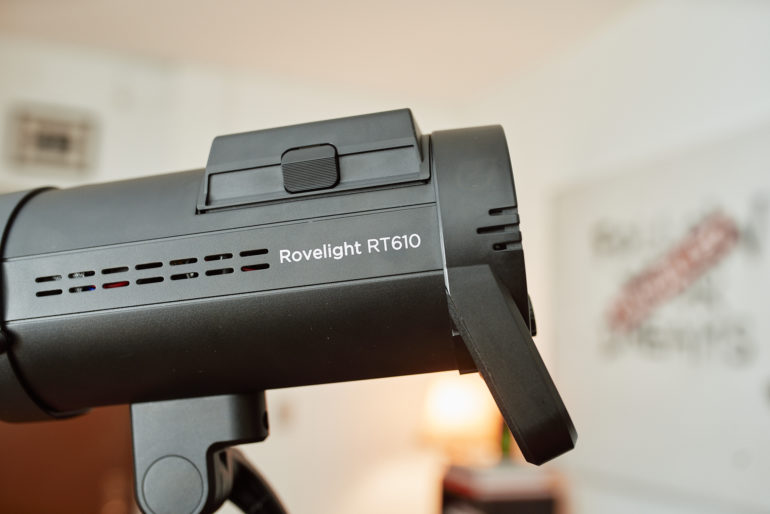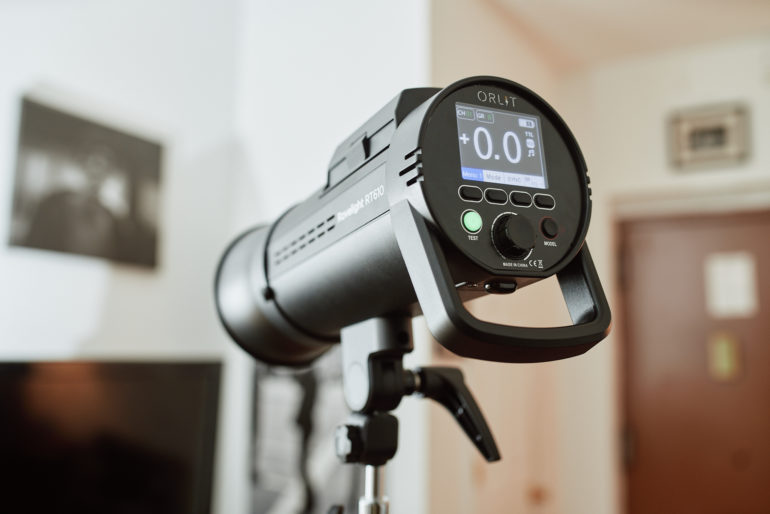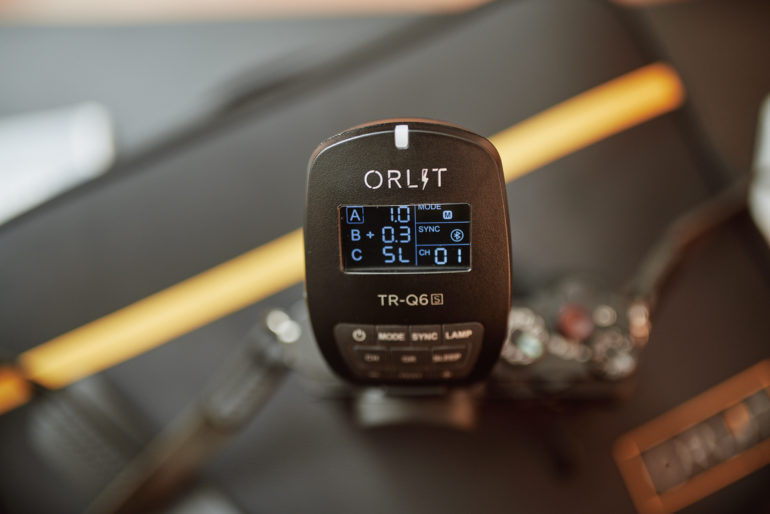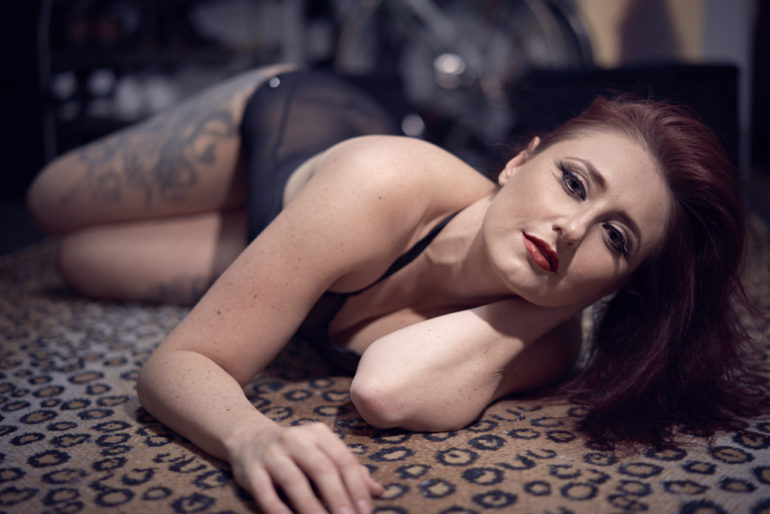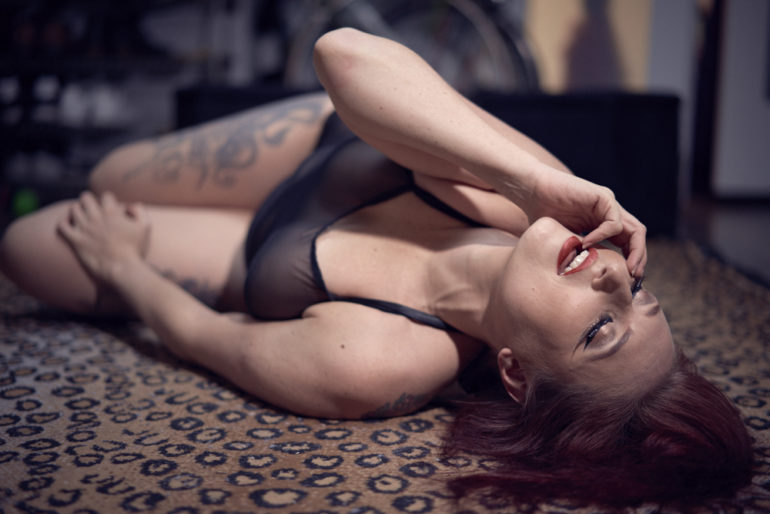Last Updated on 03/09/2018 by Mark Beckenbach
The ORLIT RoveLight RT 610 TTL Monolight gives you a whole lot in an affordable package.
Adorama’s ORLIT RoveLight RT 610 TTL Monolight is quite a powerful package. With 600 watt seconds of power, it’s going to give you more than enough light output to light a wedding hall and for most portraiture gigs. Attach a very big umbrella to it and it will obviously deliver enough power. But then consider how simple it is to use. Adorama has been refining this over the years with their Flashpoint brand and while it is more or less a variation of a GODOX light, the difference is that you can get quicker service often from Adorama right here in the US. While you’re not getting the Profoto name or build quality, I can almost guarantee you that photographers who use this light won’t be able to tell the difference between the light output from the ORLIT and a Profoto’s.
Pros and Cons
Pros
- Simple to use
- Powerful
- Available with a lot of different TTL types
- Fast flash duration
- Nice carrying case
Cons
- Manual mode won’t work if the Sony a7r III is in wireless flash mode
- Best works when the Sony a7r III isn’t in wireless flash mode.
Gear Used
We tested the ORLIT RoveLight RT 610 TTL Monolight with the Sony a7r III, Sony a7, various lenses and both Interfit and Westcott umbrellas.
Tech Specs
Tech specs taken from the Adorama listing
- Model
- Orlit RT 610
- Product Type
- Studio 600ws TTL Lithium Battery Monolight
- Guide number
- 201GN @ ft ISO 100
- Maximum power
- 600ws
- Wireless receiver
- Built-in Orlit 2.4GHz
- Channel / Group
- CH: 00-15 / GR: A/B/C/D/E/F
- Flash power variation
- M: 1.0 9.0 / HSS: 4.0-9.0 / TTL: 3.0EV 1 f-stop / 0.1 f-stop increment
- Recycling time
- 2.3s at full power
- Flash mode
- M / TTL mode
- Sync modes
- Normal / HSS / Freeze
- Flash duration (t0.5)
- NOR: 1/800s-1/8000s / FREEZE: 1/800s-1/19000s
- Color temperature
- NOR: 5500 K 150 K / FREEZE: 5500 K 800 K
- Modeling lamp
- 20W LED, Proportion / Independent mode
- Power source
- Lithium battery / DC14.8V 6000mAh
- Battery capacity
- Up to 450 times at full power
- Battery life
- 300 charge cycle (to 80% capacity)
- Auto power off
- After 60 minutes / Sleep activated after 10 minutes
- Voltage stabilization
- 1%
- Infra-red sensor
- Built-in infra-red sensor
- Sync socket
- 3.5mm
- Sync voltage
- DC6.5V
- Thermal Protection method
- Auto shutoff temperature sensor circuit
- Operating room temperature
- 32 -104 F / 0 – 40 C
- USB firmware update support
- Yes (Win 10 and Mac Compatible)
- Weight
- 5.0 lb /2.3Kg (without battery)
- Dimensions
- 14.0 x 4.6 x 7.7 in / 355 x 117 x 195mm)
Ergonomics
The ORLIT RoveLight RT 610 TTL Monolight comes in its own pseudo-suitcase. In this you can store everything neatly. It isn’t like the backpacks that you get with Profoto lights. But instead, you can think of it almost like a photographer’s pack that I’ve been seeing in more and more bags recently. With that said, the Rovelight is designed to look very minimal.
Before we go on though, this is the remote control. There’s a big, bright LCD screen and a number of other buttons. It’s much unlike most other remotes we’ve seen. It has this odd sort of curve to it and when I look at it, it sort of reminds me of a Nintendo Wii controller.
The ORLIT RoveLight RT 610 TTL Monolight doesn’t come with an umbrella reflector mind you, so you’ll need to purchase one. But it mounts onto a lightstand pretty securely and easily.
The rear of the ORLIT RoveLight RT 610 TTL Monolight is what you may care about the most. That battery pack comes out. It isn’t as integrated or as cleanly designed as what Profoto offers. But it’s got a lot of power and it’s pretty compact. Also note that the umbrella holder is in the base of the light.
Turn to the back of the ORLIT RoveLight RT 610 TTL Monolight and what you’ll spot is the LCD screen. This is standard–the buttons are there, as is a big giant dial and a few other controls.
Build Quality
Overall, the ORLIT RoveLight RT 610 TTL Monolight feels very solid. Again though, Profoto gear feels even more solid than this. But I can’t really complain at all about the ORLIT RoveLight RT 610 TTL Monolight. It’s far more affordable. Has slots for other radios, a good handle, and all the buttons feel nice too. I can’t complain.
Ease of Use
Now here’s where things get interesting. The ORLIT RoveLight RT 610 TTL Monolight has functional controls that are built in on the back of the light. The most common things that one may want to control are on the remote. You’ll just need to press the buttons accordingly.
As is the case with most other monolights though, when you make a change to the metering parameters you’ll only see those on the remote’s LCD screen. They won’t be reflected on the back of the Monolight. Essentially, you’re just best off using the controller. However, there is an audio jack for other types of lights. There’s also an infrared sensor. Still though, the most reliable way of working with this is via the remote. What you’ll also appreciate is the fact that it recycles so quickly in general that it’s pretty much an afterthought. I almost never shoot at full power and I’m positive most photographers don’t either.
What I have noticed though is that the modelling lamp can run pretty hot. To compensate for this, the ORLIT RoveLight RT 610 TTL Monolight has a fan built in. When the light gets hotter, the fan goes into a sort of overdrive.
Image Quality
The ORLIT RoveLight RT 610 TTL Monolight is a fantastic light when it comes to image quality. For the most part, I’m confident a lot of people would never really be able to tell the differences between the light output from something like this vs others on the market. It’s dependant on your lens, the camera, your camera profile, your light modifier, and whether or not you’re manually white balancing. I’ve always thought manual white balance is the way to go when working with monolights to ensure that you get the best colors. Most photographers using this light will probably want to work with a large umbrella, softbox or beauty dish. But personally I’ve always been one who adores the look of a monolight with just the umbrella reflector. I’ve also always really liked what a frosted dome can do.
In my opinion too, the TTL here works better than Sony’s own. To be fair, Sony’s own flashes are partially based on the old Minolta system. If you want to do something like second curtain flash, then you need a flash in the hot shoe. Here, you don’t. It will work with the radio.
Color Consistency
Disclosure: this image of Nina La Voix was shot and then a preset was applied in Capture One 11. Yet according to the Lumu Light Meter, this monolight delivers a pretty consistent light output in normal mode with a bit of variation. When shooting in the action freeze mode though, it tends to vary a bit more. But that can be fixed in post. The variation depends on the power output of the flash. When at full power, I saw a bit more color consistency skews than at lower power levels. That’s fine for me because I’m usually using the ORLIT RoveLight RT 610 TTL Monolight at around maybe 1/4 power.
Flash Duration
When testing the flash duration of the ORLIT RoveLight RT 610 TTL Monolight with the Lumu Light meter, I found that the duration is pretty much around 1/9,100 or so. That’s faster than the 1/8000th that your camera’s shutter curtains can do. But if you need something faster, I’ve been able to get results from the ORLIT RoveLight RT 610 TTL Monolight at 1/17,000th. You sacrifice some color consistency but it’s doable for sure.
Conclusions
Likes
- Powerful
- Simple to use
- Reliable
- Simply works
- Modelling lamp is bright enough to use for videos too
Dislikes
If you’re a photographer looking for a monolight that isn’t super expensive, then the ORLIT RoveLight RT 610 TTL Monolight could be what you want. You’re not getting Profoto’s quality here with the build or the design, but you’re getting consistent results. You’re also not getting Profoto’s consistency when it comes to flash duration or full color consistency. But at the same time it’s not far off. This light is more tailored to a hobbyist more than anything else. It’s nice. Can you use it for professional gigs? Totally. In fact, at the moment it is my main light. It simply works. Personally, I’d love a version of this light even smaller and at 360 watt seconds with a built in battery pack. But one can only dream.
The ORLIT RoveLight RT 610 TTL Monolight receives our Editor’s Choice award. Want one? They’re $649.


